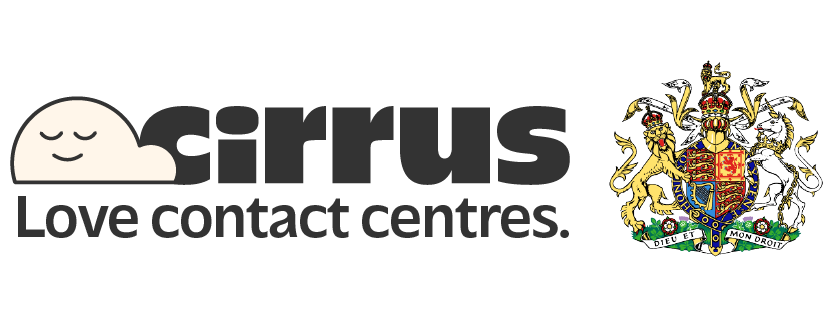What is an omni-channel contact centre?
An omni-channel contact centre is a cloud-based contact centre solution that allows people to engage with organisations through a variety of channels, such as voice, email, live chat, social media platforms, and mobile apps, while maintaining a seamless customer experience. Unlike multichannel contact centres, which operate in silos, this approach offers a unified customer experience across all communication platforms.
It’s designed to meet modern customer expectations, where individuals switch effortlessly between channels without repeating information. This approach supports customer service teams with real-time data and a single interface, improving the quality of customer conversations and driving business success.
Who needs omni-channel contact centres?
An omni-channel contact centre is useful for any business owner who wants to streamline customer interactions. For example, retail sectors use it to maintain continuity across online and in-store customer service experiences.
In the public sector, government and healthcare services use it to manage customer inquiries across departments. Educational institutions in higher education need it to handle communication with a diverse customer base across multiple touchpoints. Sectors such as housing, not-for-profit, and business process outsourcing also rely on this strategy to handle both simple questions and complex issues.
What is the difference between a multichannel and omni-channel contact centre?
Multichannel contact centres offer various communication channels, such as phone or email, but these operate on separate channels. Agents lack visibility into previous interactions, which often leads to delays and repetitive conversations.
An omni-channel approach integrates all customer service channels into one cloud-based contact centre platform, offering a consistent customer experience. It allows contact centre agents to access conversation history, deliver personalised service, and switch between channels without losing context.
This key difference supports quicker resolution times and boosts customer satisfaction.
Top benefits of an omni-channel contact centre
- Seamless experience across all customer touchpoints
- Quicker response times and improved first-call resolution
- Lower customer churn and improved customer loyalty
- Higher agent efficiency and lower average handle times
- Access to real-time analytics for better contact centre strategies
- Enhanced ability to offer personalised experiences based on customer preferences
- Better alignment with business goals through data-driven insights
Integrated tools such as AI-enabled contact centre help deliver AI-powered automation, intelligent routing, and smart workflows, leading to maximum efficiency.
Features of an omni-channel contact centre
- Unified interface for all digital channels
- Real-time access to interaction history and customer history
- AI-supported services like AI-powered agent support for managing customer queries
- Integration with Microsoft Teams for internal collaboration
- Security through secure payments
- Built-in CRM access for advanced customer relationship management
- Supports video calls, social media messages, and communication channels that customers prefer
These features provide a customisable solution to meet unique organisational needs.
How to set up an omni-channel contact centre
- Map your customer journey and define relevant customer touchpoints. This helps identify where customers typically connect with your service and where improvements can enhance the overall experience.
- Identify required channels of communication, such as voice, chat, and video meetings. Include every platform your customers use, ensuring a consistent approach across all touchpoints.
- Select a cloud-based contact centre or comprehensive solution with AI-powered smart routing. This enables automatic call distribution and reduces response times through intelligent decision-making.
- Integrate systems like workforce optimisation to manage agent performance effectively and match staff schedules with real-time demand.
- Train customer service agents to use the contact centre software efficiently. They should be able to switch between active channels, access interaction history, and provide personalised support.
- Adopt tools that support accessibility and compliance with regulatory standards. This ensures the solution meets diverse user needs and remains reliable across markets.
Omni-channel contact centre best practices
- Use predictive analytics for customer intent and customer sentiment detection. This helps teams understand what people want and respond quickly with the right support.
- Maintain a unified customer interaction management system so that all communication across channels stays connected, avoiding missed details or repeated questions.
- Offer both self-service options and agent-led support to handle common questions quickly, while also providing help for more complex customer issues.
- Design menu flows that reflect how customers naturally behave, making it easier for them to choose the right service or action without confusion.
- Track key performance indicators such as average speed, resolution rate, and average hold time to measure the quality and efficiency of service delivery.
- Regularly review customer feedback to improve your customer service strategy and stay in tune with what your customers expect and prefer.
Smart setups use tools such as AI-powered routing and workflow automation to manage communications with customers efficiently.
How to implement an omni-channel contact centre strategy
Developing a successful omni-channel strategy involves understanding customer expectations, aligning internal business processes, and choosing a reliable contact centre platform.
- Start with customer journey mapping.
- Monitor customer engagement across active channels.
- Integrate cloud-based software that supports AI-powered contact centre software features.
- Include tools for intelligent automation and smart routing.
- Engage your sales team and support agents early to encourage adoption.
For example, business applications in the retail industry show how unified platforms help tackle complex customer relationships.
The future of omni-channel contact centres
Emerging trends focus on tighter AI integration, such as natural language processing and real-time sentiment tracking. This allows agents to handle complex interactions more efficiently while customers get more personalised interactions.
Contact centre leaders are now adopting cloud-based omnichannel contact centre solutions that support automatic call distribution, actionable insights, and proactive alerts. In sectors like government and healthcare, these innovations will lead to a better level of service and fewer compliance risks.
With increased use of AI-powered automation, the goal is to provide exceptional customer experiences with less effort, more accuracy, and at lower costs.
Conclusion
An omni-channel contact centre is no longer a luxury but a necessity in today’s customer-focused world. By offering a consistent experience across all communication channels, it strengthens relationships, reduces response time, and improves customer loyalty. Businesses that adopt a unified strategy gain access to better insights, improve agent efficiency, and adapt to changing needs. With the right tools, setup, and ongoing optimisation, organisations can deliver the level of service today’s customers truly expect.
To see how a true omni-channel experience can transform your operations, explore a flexible omni-channel solution or start your journey with a free demo.
Your Contact Centre, Your Way
This is about you. Your customers, your team, and the service you want to deliver. If you’re ready to take your contact centre from good to extraordinary, get in touch today.


